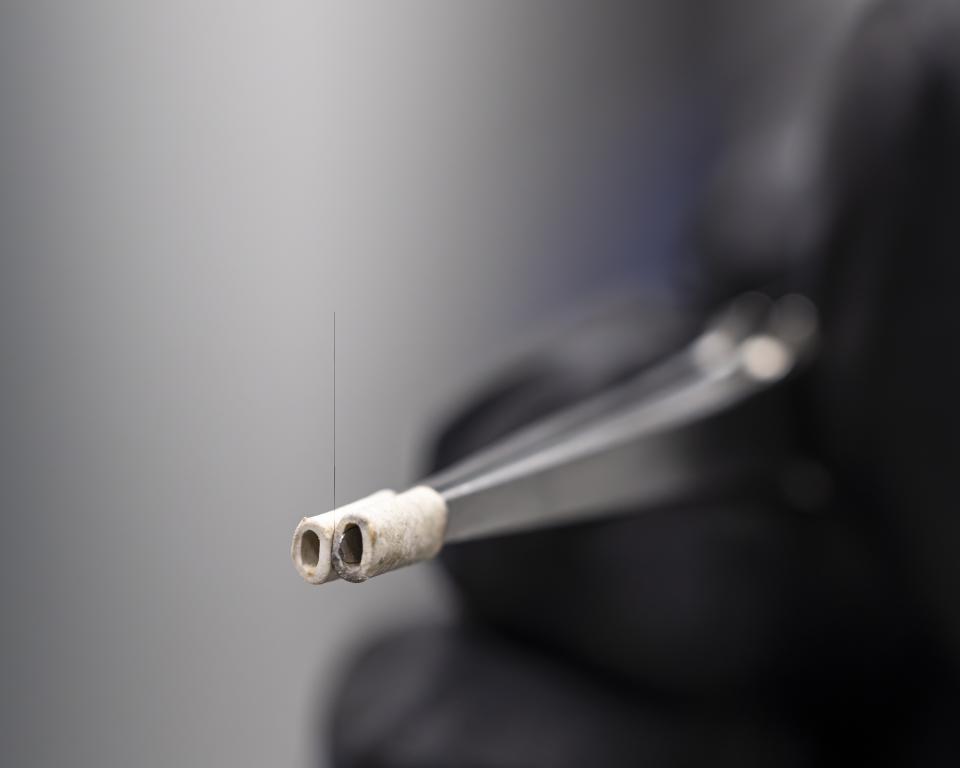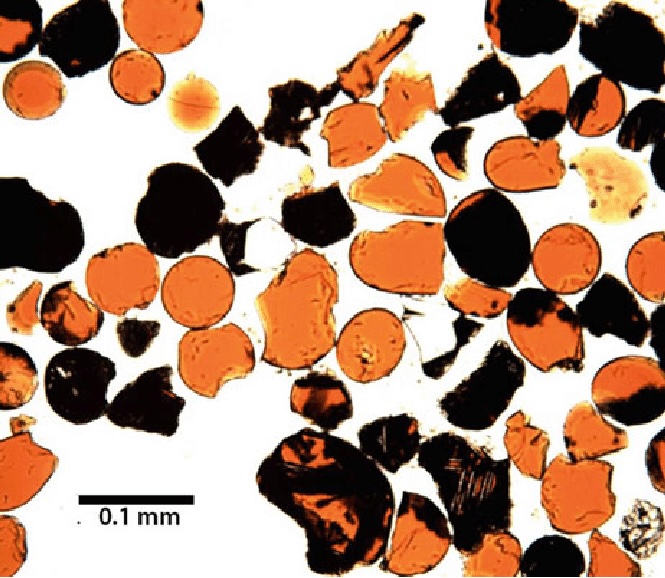2025-06-17 オークリッジ国立研究所(ORNL)
At the air-water interface, a negatively charged amino acid carries out a nucleophile attack on a gas molecule to convert it into a product. The reaction rate is enhanced due to significant reduction in the dynamical coupling of the solvent water with the reaction paths at the interface. Credit: Adam Malin, ORNL, U.S. Dept. of Energy
<関連情報>
- https://www.ornl.gov/news/supercomputer-simulations-show-how-speed-chemical-reaction-rates
- https://pubs.acs.org/doi/10.1021/jacs.4c14612
- https://pubs.acs.org/doi/full/10.1021/acsami.3c18225
空気-水性アミノ酸界面におけるCO2直接捕捉の促進における非平衡溶媒効果の役割 The Role of Nonequilibrium Solvent Effects in Enhancing Direct CO2 Capture at the Air–Aqueous Amino Acid Interface
Nitesh Kumar,Vyacheslav S. Bryantsev,and Santanu Roy
Journal of the American Chemical Society Published: December 23, 2024
DOI:https://doi.org/10.1021/jacs.4c14612
Abstract
Direct air capture (DAC) technologies are limited by the poor understanding of the dynamic role of interfaces in modulating the chemisorption of CO2 from air into solutions. While the reactivity of aqueous amine-based solvents in the bulk environment is strongly inhibited by nonequilibrium solvent effects, promoting DAC at interfaces posits a possibility to reduce the coupling with the solvent and significantly accelerate DAC. Building on an experimentally proven concept to bring an anionic glycine absorbent to the interface through ion-pairing interactions with a positively charged surfactant, we establish the fundamental time scales for key elementary steps involved in DAC with rate theory and enhanced-sampling ab initio molecular dynamics simulations. We elucidate the mechanism by which water influences the free energy barriers and dynamical crossing-recrossing of those barriers, affecting the reaction rates. We find that water reorganizes to partially dehydrate [-NH2], facilitating SN2-based CO2 conversion to a zwitterion, which then releases a proton via overhydration of [-NH2]. The low-density interfacial water favors dehydration over overhydration, leading to a comparatively higher barrier (slower kinetics) for proton release. The barrier-recrossing events neutralize this effect, letting both steps occur at the same time scale (sub-microseconds) and making the overall DAC process faster at the interface than in the bulk water. Such an understanding of environment-sensitive solvent effects on the reaction kinetics will help design tailored interfaces for enhanced CO2 capture kinetics via control of solvation and ion paring.
空気-水界面における荷電オリゴマーとアミノ酸の相乗的会合: 表面指向型CO2回収への道 Synergistic Assembly of Charged Oligomers and Amino Acids at the Air–Water Interface: An Avenue toward Surface-Directed CO2 Capture
Uvinduni I. Premadasa,Nitesh Kumar,Zewen Zhu,Diana Stamberga,Tianyu Li,Santanu Roy,Jan-Michael Y. Carrillo,Jeffrey D. Einkauf,Radu Custelcean,Ying-Zhong Ma,Vera Bocharova,Vyacheslav S. Bryantsev,and Benjamin Doughty
ACS Applied Materials & Interfaces Published: February 27, 2024
DOI:https://doi.org/10.1021/acsami.3c18225
Abstract
Interfaces are considered a major bottleneck in the capture of CO2 from air. Efforts to design surfaces to enhance CO2 capture probabilities are challenging due to the remarkably poor understanding of chemistry and self-assembly taking place at these interfaces. Here, we leverage surface-specific vibrational spectroscopy, Langmuir trough techniques, and simulations to mechanistically elucidate how cationic oligomers can drive surface localization of amino acids (AAs) that serve as CO2 capture agents speeding up the apparent rate of absorption. We demonstrate how tuning these interfaces provides a means to facilitate CO2 capture chemistry to occur at the interface, while lowering surface tension and improving transport/reaction probabilities. We show that in the presence of interfacial AA-rich aggregates, one can improve capture probabilities vs that of a bare interface, which holds promise in addressing climate change through the removal of CO2 via tailored interfaces and associated chemistries.



